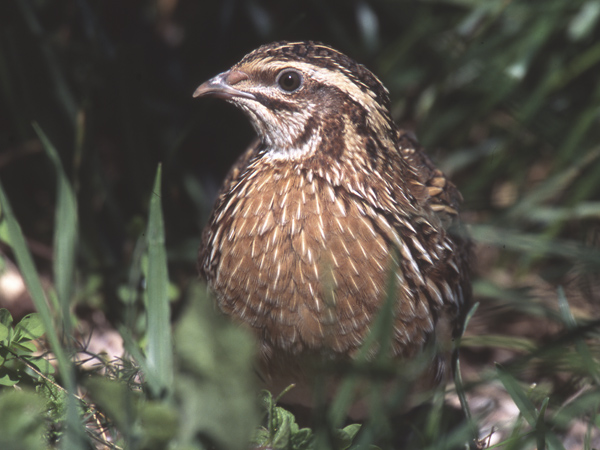Ibizan use, wolf on the Basque coast
- Pitius' lizard was first observed in the 1990s in San Juan de Gaztelugatxe, Bermeo. Man brought him from Ibiza and liberated him in that special area of the Basque coast. In a short time he has taken over the area and thrown the lizard out of the “house” area. In the islands of Pitiusa, what is “dove” has become “wolf”.

The San Juan de Gaztelugatxe was not much, and in 2005 we found it in Donostia-San Sebastián, in Urgull. A red alarm was triggered among the researchers. It was no less. Despite the measures taken, there is a risk that something similar will happen on the spot. Where and in the residence of the famous lizard of Urgull…
The Pitius lizard (Podarcis pityusensis) has all the characteristics that attract humans: light green dorsum, sturdy body and occasionally blue scales on faces. Comparing with the three species of sugandilas that can be found on the Basque coast, it is aesthetically eye-catching; attractive to terrarium lovers.
On the stairs of San Juan de Gaztelugatxe, the lizard of the Pitius is now the one that receives tourists, since it has
thrown the
hornacine out of its house
We do not know with what intentions the person who first brought this reptile to the Basque Country did, but he could not leave it in a better, or worse, place according to the point of view. The lizard has found his Ibiza in the Protected Biotope of Gaztelugatxe.
He immediately settled around him. He managed so well that he also shed the lizard (Podarcis muralis) that lived there. The invasion has already taken place. It will cost the wall lizard to recover its place of origin. On the stairs of San Juan de Gaztelugatxe, the lizard of the Pitius is the one that now receives tourists.
Lagartija florista
There are many reasons to explain why the lizard he has brought from Ibiza and who has been liberated has sent the native. On the one hand, it is bigger, stronger; and on the other, unlike the natural ones, the lizard of the Pitius eats nectar, flowers and fruits, as well as insects. In few places it is more likely to obtain fodder and therefore to survive.
Climate could be one of the main enemies for the foreign animal. In San Juan de Gaztelugatxe, the proximity of the sea tempers the winters, and the soles of rock limestone and scrub are a nice residence for him
Climate could be one of the main enemies for the foreign animal, or the presence of large predators. In San Juan de Gaztelugatxe, the proximity of the sea tempers the winters and the soles of rock limestone and scrub are a nice residence for him. The species has adapted to higher rainfall and lower sun rates.
His enemies do not surround him, except some birds. In short, San Juan de Gaztelugatxe is a small island, and the enemies and the main competences of the lizard of Pitius, such as the soft snake or the schreiber lizard, are located outside the island, on the coast. Even the small bridge of San Juan de Gaztelugatxe extends the small kingdom of the lizard of Pitius. On the other side of the bridge, the buttress awaits him, as if he waited for the time to re-enter the island: the Dema of the Throne of the Lizards does not cease. But, of course, the best news would be that the lizard from Ibiza did not extend to the coast.
.jpg)
He has also moved to Urgull (Donostia-San Sebastian)
The brown lizards of Santa Clara and Urgull, in Donostia-San Sebastián, are unique. But the human being gave him a great deal of competition. Pitius lizard. Gradually, the species introduced into Urgull has spread
The Gipuzkoan capital also has its own island, Santa Clara. And what was the island at another time: Monte Urgull. The lizards found in both cases have been viewed with magnifying glass over the years by experts. In fact, autochthonous lizards, the so-called gray lizards (Podarcis liolepis), are different from those around us: bigger, stronger, darker in some cases… and these particularities prompted in the 1980s to consider them as different subspecies: It was called Podarcis hispanica sebastiani. Although research in recent years has questioned whether this is a subspecies, no one denies that Urgull lizards are special.
Until recently, they lived quiet. In 2005, however, the human being placed great competition on it. Since it was first seen in Urgull to a male lizard of the pitius, the introduced species has gradually spread, although it has not grown as much as in Gaztelugatxe.
It is very difficult to know if the Urgull people come from Gaztelugatxe or from Ibiza. But the moment a foreign species enters an area and, as in this case, it's a striking species, it increases the risk of it spreading to nearby places. The maintenance of the species in a space is increasing, and there is an increasing likelihood of human beings moving to another area of the environment. Rapid response to detection of invasive alien species is desirable to prevent the problem from getting worse.
The increase in tourism that Urgull and especially Gaztelugatxe have suffered in recent years, of course, does not help at all. More and more people around, more risk of spreading to other places, voluntarily or involuntarily.
Ibizan use…
Most of the subspecies of this reptile found in the Pitiusa Islands are threatened. Foreign invasive species in our country, is a protected species in its area of origin and fulfills an important ecological function: it extends the seeds of the plants.
Not all alien species are invasive, but this lizard, brought from Ibiza, has already fulfilled all the requirements to be declared as such. It has quickly adapted to our environment, it reproduces and the native species is being evicted. Here's what's been seen so far, but it's not clear whether the future introduction of the species into our environment will influence the ecosystem around us. The ability to propagate seed from plants may benefit certain plant species to the detriment of others. There may be many small consequences that escape the eyes of researchers.
.jpg)
And now what?
When the lizard of Pitius entered San Juan de Gaztelugatxe, there was no reaction and soon conquered the island. However, as soon as Urgull was known, the Society of Aranzadi Sciences launched the projects for the control of the species in the two places where it is introduced.
Aranzadi, with the collaboration of the City of Bermeo, the Basque Government and the Provincial Council of Bizkaia, have been investigating and controlling the population of the lizards of Gaztelugatxe for years.
The Herpetology Department of Aranzadi, in collaboration with the Bermeo City Hall, the Basque Government and the Provincial Council of Bizkaia, have been conducting research for years in the Gaztelugatxe area to better understand the local population, as well as to control the population of the lizard and disseminate the project. In the period 2008-2012, 825 specimens were captured. Only in 2017, 726. They are clear that disposal is impossible. For a long time we will have the lizard of Pitius.
Currently, the means of experimentation and research are open to gathering data on what has happened and, as far as possible, to take action. The work started in 2008 is continuing and has received the collaboration of the Doñana Biological Station in Spain, a good example of research on biological invasions.
The market for the sale of alien species, the domestication of wild species and their release anywhere can cause serious ecological damage
In Urgull, the members of the Aranzadi Department of Herpetology began to carry out the control tasks as soon as they were located. The situation of the brown lizard also prompted them to do so, and immediately they began to take action with the City Hall of San Sebastian. Although the number of specimens has not increased much, today the population of the Pitius reptile remains the same as that of the Urgull Lizard. The future will tell what happens. During the Ugalina era, the large lizards of Ibiza have been attacking the locals and throwing them out of the best places. The law of the elderly…
The market for the sale of alien species, the domestication of wild species and their release anywhere can cause serious ecological and economic damage in an environment. Let us admit that: The lizard of the pitius has around it a wolf: man. After all, we are responsible for the uncontrolled movement of species. Research, monitoring and control work on lizard will not suffice if adequate dissemination is not made. The case of the lizard of the pitius is a close and very useful model to know what we should not do. It's no small thing.
Eskola inguruko natur guneak aztertu dituzte Hernaniko Lehen Hezkuntzako bost ikastetxeetako ikasleek. Helburua, bikoitza: klima larrialdiari aurre egiteko eremu horiek identifikatu eta kontserbatzea batetik, eta hezkuntzarako erabiltzea, bestetik. Eskola bakoitzak natur eremu... [+]
Andeetako Altiplanoan, qocha deituriko aintzirak sortzen hasi dira inken antzinako teknikak erabilita, aldaketa klimatikoari eta sikateei aurre egiteko. Ura “erein eta uztatzea” esaten diote: ura lurrean infiltratzen da eta horrek bizia ekartzen dio inguruari. Peruko... [+]
Biologian doktorea, CESIC Zientzia Ikerketen Kontseilu Nagusiko ikerlaria eta Madrilgo Rey Juan Carlos unibertsitateko irakaslea, Fernando Valladares (Mar del Plata, 1965) klima aldaketa eta ingurumen gaietan Espainiako Estatuko ahots kritiko ezagunenetako bat da. Urteak... [+]
Nola azaldu 10-12 urteko ikasleei bioaniztasunaren galerak eta klima aldaketaren ondorioek duten larritasuna, “ez dago ezer egiterik” ideia alboratu eta planetaren alde elkarrekin zer egin dezakegun gogoetatzeko? Fernando Valladares biologoak hainbat gako eman dizkie... [+]























